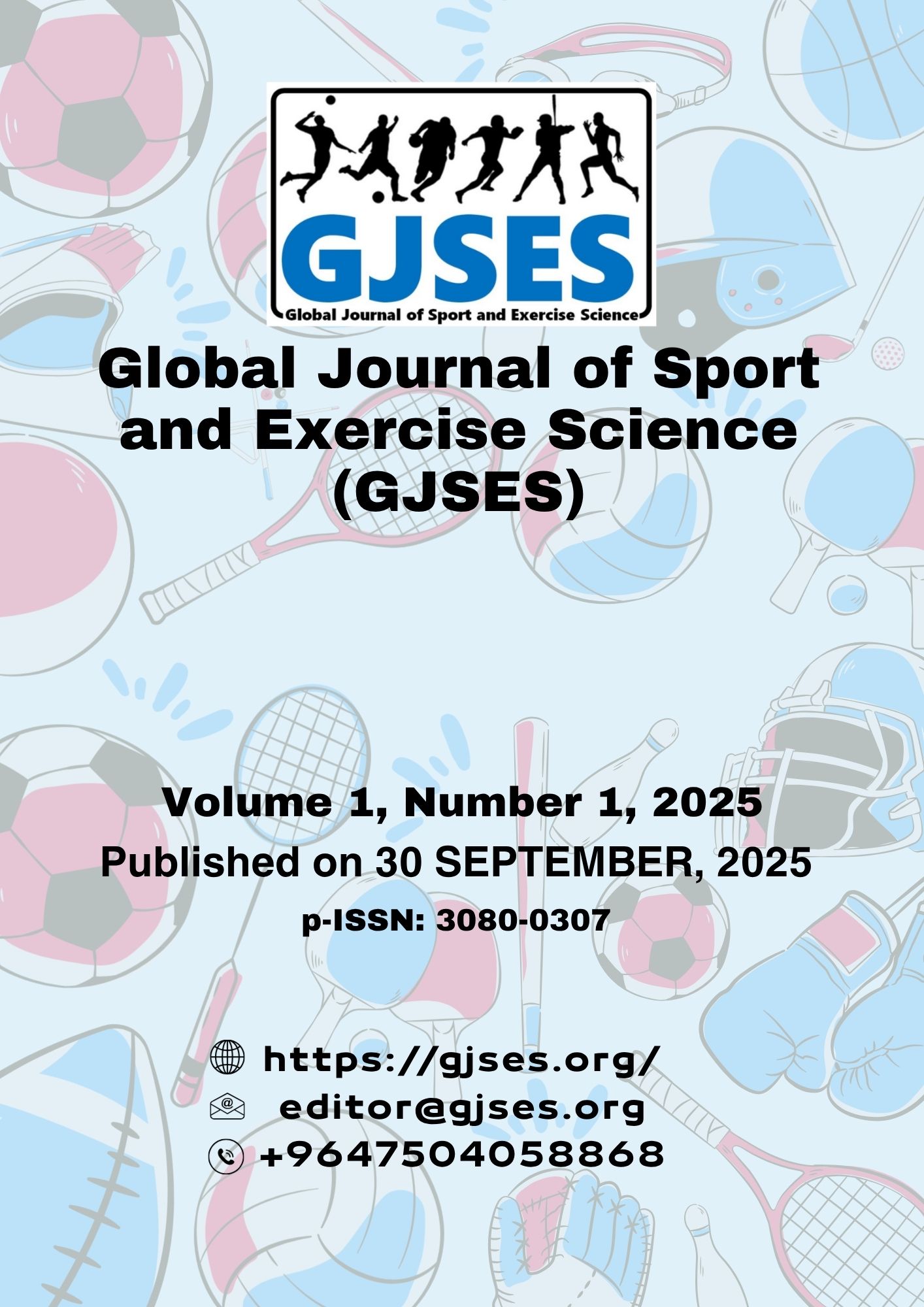Role of Minimalist Footwear on Stability, Change of Direction, and Force Production: A Randomized Crossover Trial
DOI:
https://doi.org/10.63750/w0pndm42Keywords:
Minimalist Shoes, Anaerobic Performance, Sports Performance , AgilityAbstract
The purpose of the present study was to examine the acute effects of minimalist footwear (MFW) on participants’ ability to stabilize, change direction, and produce force. A randomized crossover design was used. Eighteen subjects participated. Participants tested in MFW and traditional running shoes (RS) and were randomly assigned an order. The protocol included a warm-up, limits of stability assessment, pro-agility test, modified t-test, countermovement, and isometric mid-thigh pull. No significant differences were found (p<0.05), and the effect sizes were trivial to small. For the limits of stability assessment, time (ES = 0.350) and backward (ES = 0.229) had small effect sizes with MFW performing better and right had a small effect size (ES = 0.287) with RS performing better. Every other variable for the limits of stability had a trivial effect size. For the pro-agility assessment there was a small effect size (ES = 0.429) with MFW performing better. For the modified t-test assessment there was a small effect size (ES = 0.411) with MFW performing better. For the countermovement jump, every variable had a trivial effect size. For the isometric mid-thigh pull, peak force (ES = 0.216), time to peak force (ES = 0.316), and rate of force development 0 – 50 ms (ES = 0.246) had a small effect size. Rate of force development 0 – 100 ms had a trivial effect size with MFW performing better. In conclusion, this indicates that MFW may not acutely influence stability and may positively influence change of direction and force production.
Downloads
Downloads
Published
Issue
Section
License
Copyright (c) 2025 Logan Allen, Justin Kilian (Author)

This work is licensed under a Creative Commons Attribution 4.0 International License.
Copyright & Licensing Policy:
- Open Access Policy: This journal follows a fully Open Access model, which means all published research articles are freely available to readers without any subscription or access fees. Anyone can read, download, copy, distribute, print, and cite the published work without restrictions, as long as they comply with the journal’s licensing terms.
- Copyright & License:
- All articles published in this journal are licensed under the Creative Commons Attribution 4.0 International (CC BY 4.0).
- This license allows unrestricted reuse and distribution, provided that proper credit is given to the original author and source.
- Authors retain full copyright ownership of their work while granting the journal the right to publish it for the first time under this license.
- Author Responsibilities:
- Authors must agree to the journal’s licensing terms before publication.
- Submitted manuscripts must be original and not published or under consideration elsewhere during the review process.
- Any reuse of published content by third parties must comply with the CC BY 4.0 license, ensuring no additional restrictions are imposed on reuse.
- Publication Fees (free to publish):
- This journal (free to publish) does not charge any fees for access to published research, supporting the principle of free and open scientific knowledge for all.





